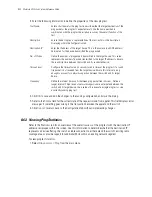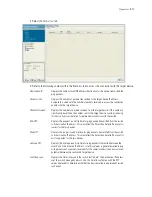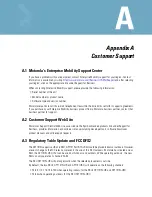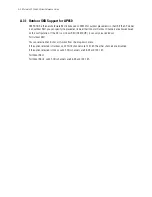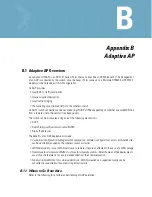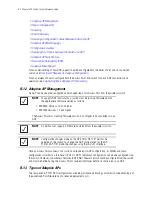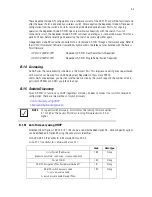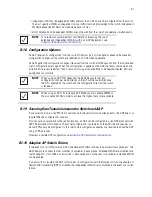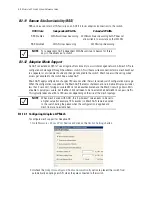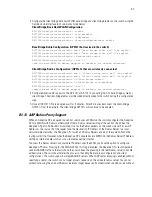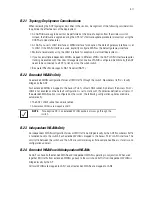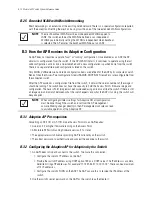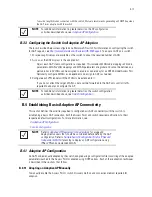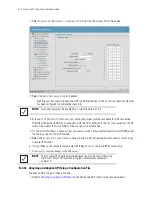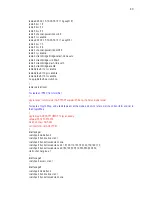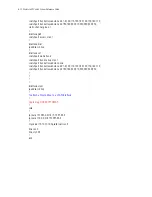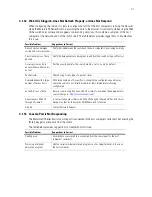
B-11
B.2.1 Topology Deployment Considerations
When reviewing the AAP topologies describes in the section, be cognizant of the following considerations
to optimize the effectiveness of the deployment:
• An AAP firmware upgrade will not be performed at the time of adoption from the wireless switch.
Instead, the firmware is upgraded using the AP-51x1’s firmware update procedure (manually or using the
DHCP Auto Update feature).
• An AAP can use its LAN1 interface or WAN interface for adoption. The default gateway interface is set
to LAN1. If the WAN Interface is used, explicitly configure WAN as the default gateway interface.
• Motorola recommends using the LAN1 interface for adoption in multi-cell deployments.
• If you have multiple independent WLANs mapped to different VLANs, the AAP's LAN1 interface requires
trunking be enabled with the correct management and native VLAN IDs configured. Additionally, the AAP
needs to be connected to a 802.1q trunk port on the wired switch.
• Be aware IPSec Mode supports NAT Traversal (NAT-T).
B.2.2 Extended WLANs Only
An extended WLAN configuration forces all MU traffic through the switch. No wireless traffic is locally
bridged by the AAP.
Each extended WLAN is mapped to the Access Point's virtual LAN2 subnet. By default, the Access Point's
LAN2 is not enabled and the default configuration is set to static with IP addresses defined as all zeros. If
the extended WLAN option is configured on the switch, the following configuration updates are made
automatically:
• The AAP’s LAN2 subnet becomes enabled
•
All extended WLANs are mapped to LAN2
.
B.2.3 Independent WLANs Only
An independent WLAN configuration forces all MU traffic be bridged locally by the AAP. No wireless traffic
is tunneled back to the switch. Each extended WLAN is mapped to the Access Point's LAN1 interface. The
only traffic between the switch and the AAP are control messages (for example, heartbeats, statistics and
configuration updates).
B.2.4 Extended WLANs with Independent WLANs
An AAP can have both extended WLANs and independent WLANs operating in conjunction. When used
together, MU traffic from extended WLANs go back to the switch and traffic from independent WLANs is
bridged locally by the AP.
All local WLANs are mapped to LAN1, and all extended WLANs are mapped to LAN2.
NOTE
For adaptive AP, in an extended WLAN, packets always go through the
switch.
Summary of Contents for RFS Series
Page 1: ...M Motorola RFS Series Wireless LAN Switches WiNG System Reference Guide ...
Page 10: ...TOC 8 Motorola RF Switch System Reference Guide ...
Page 56: ...2 8 Motorola RF Switch System Reference ...
Page 334: ...5 52 Motorola RF Switch System Reference 2 Select the MU Status tab ...
Page 510: ...7 32 Motorola RF Switch System Reference Guide ...
Page 534: ...8 24 Motorola RF Switch System Reference Guide ...
Page 570: ...C 14 Motorola RF Switch System Reference Guide ...
Page 589: ......


